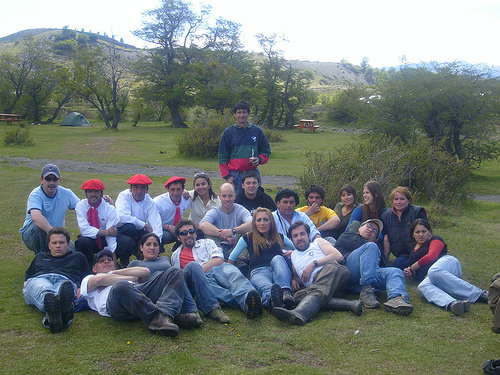Here’s my itinerary on a recent morning:1. Pack a gourd with yerba mate, a traditional Chilean tea that, in a very ritualistic manner, is infused with hot water and passed among a group of people who take turns sipping it through a metal straw, or bombilla 2. Saddle a horse. 3. Help a compañero run from one point to another holding a shrieking piglet by the forearms 4. Split firewood and light a fire 5. Clean a bathroom 6. Pitch a tent, taking into account the wind that’s blowing in from the northwest Ok, I’ll admit. That’s not a typical morning for me here. It was actually a teambuilding exercise for some of Fantastico Sur’s employees. I learned a lot about the jobs other people — the gauchos (cowboys) and the maintenance staff — have around the hostería property, how to pack a gourd of matte, oh, and how to work as a team.
My team:



